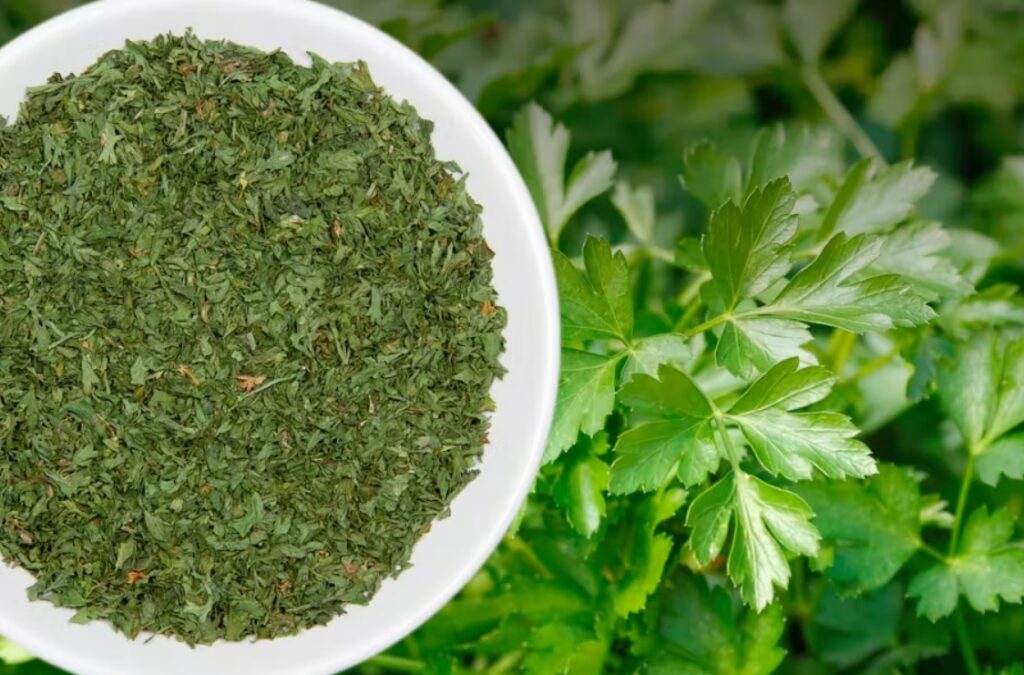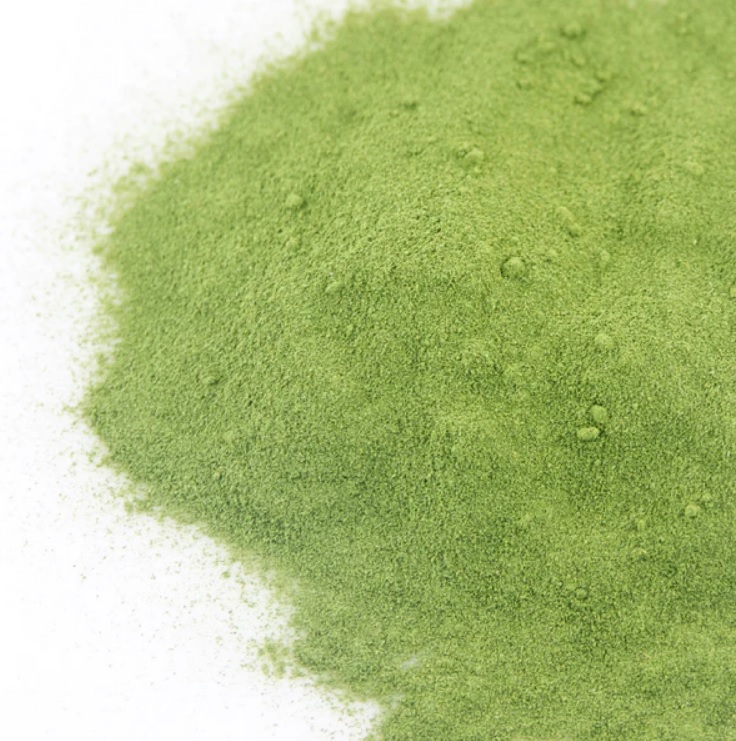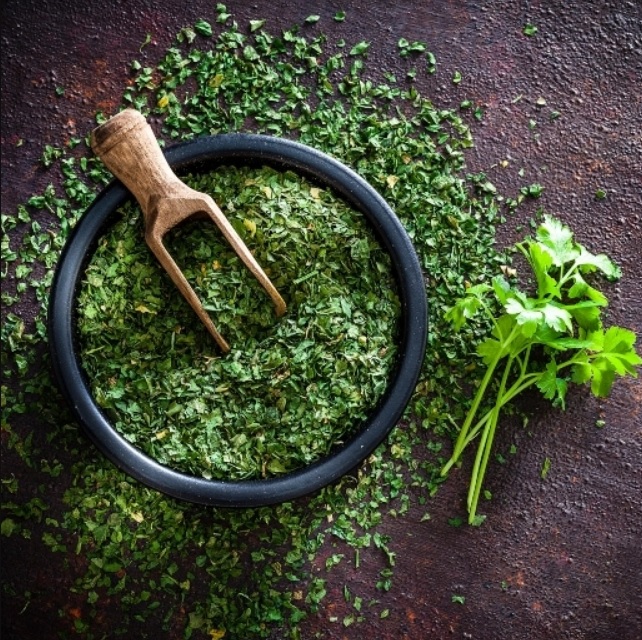Parsley powder

Respiratory treatment:
Parsley is useful in asthma attacks and respiratory disorders, and parsley juice treats bronchial infections by boiling parsley in water for 10 minutes, then drinking it several times during one day, to purify and cleanse the respiratory system.
Nutritional value:
Volatile oils, the most important of which are:
Apiole compound
Myristicin compound
Furocoumarin
Flavonoids
Vitamin C, which is present in a large percentage equivalent to 4 times its percentage in lemon, as it was found that every 100 grams of parsley contains 165 milligrams of the vitamin. It helps increase the body’s resistance to colds and bronchitis, and is superior to lemon in this regard.
Vitamin A is beneficial for eyesight and sexual energy
Iron is useful for people with anemia and severe anemia
Vitamin (B), (B2), (B3), and (B6)
It is also very rich in chlorophyll
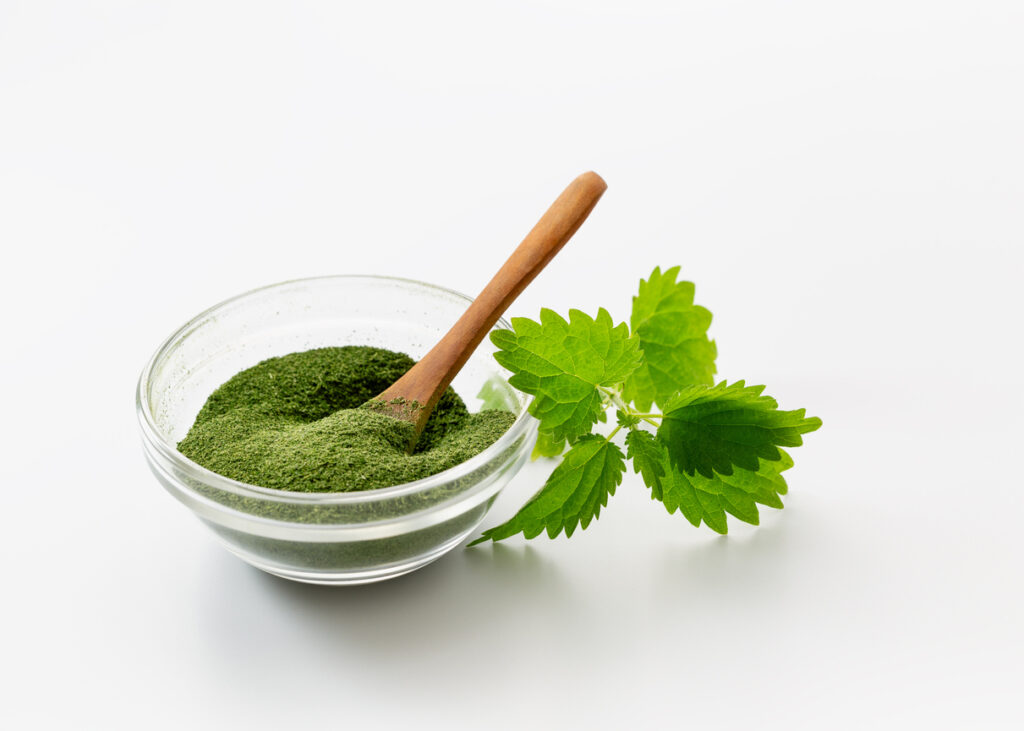
Benefits of parsley:
Galactagogue
Diuretic
Amenorrhea
Sweat-producing
Cell rejuvenator
aperitif
Body cleanser of toxins
Facilitating labor: It facilitates the exit of the fetus
Disinfectant against bacteria and viruses
A stimulant for memory, the reproductive, nervous and digestive systems
It helps the body absorb iron found in other foods
Strengthens blood capillaries
Increases overall body vitality
It gives the skin a soft texture and is beneficial in resisting wrinkles
Gives you great breath
Parsley in the diet: Parsley contains important fibers and vitamins that help in the diet.
Benefits of parsley for the heart: Folic acid in parsley works to convert homocysteine, which threatens blood vessels, into harmless molecules.
Parsley for hair: Parsley can be used on hair to prevent hair loss.
Kidney stones: Parsley works to get rid of urinary infections and break up kidney stones.
Parsley for the skin: Vitamin C, which is abundant in parsley, protects against skin aging, as it acts as an antioxidant and helps in the production of collagen.
Cancer resistance: Some studies have confirmed that the myristicin compound found in parsley helps protect the body from cancer by neutralizing free radicals.
Parsley and colon: It increases the digestion of fats and proteins.
Regulating menstrual disorders
Parsley for diabetes: A study published in 2003 found that parsley has the ability to improve blood sugar levels.
According to the US Department of Agriculture, each cup of chopped parsley (60g) contains the following nutritional information:
Calories: 22
Fat: 0.47
Saturated fat: 0
Carbohydrates: 3.80
Fiber: 2
Proteins: 1.78
Cholesterol: 0
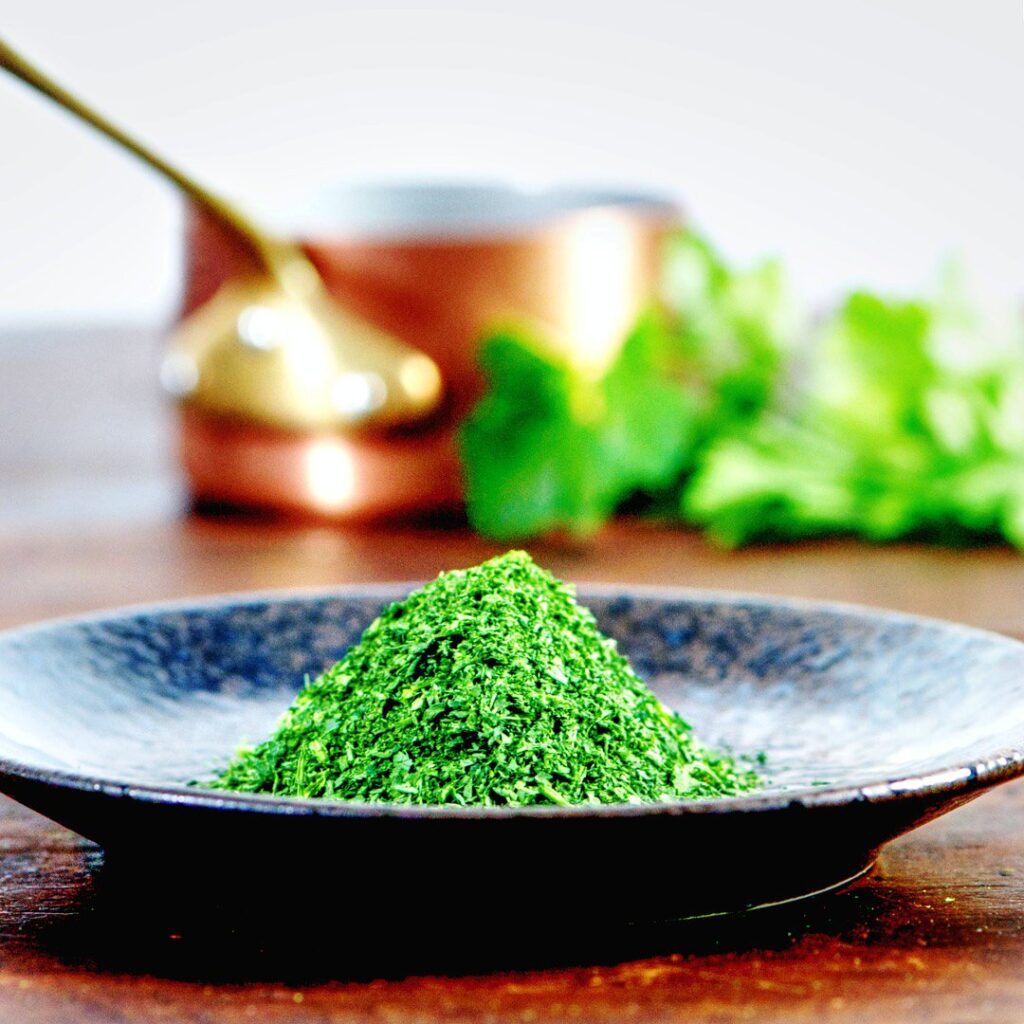
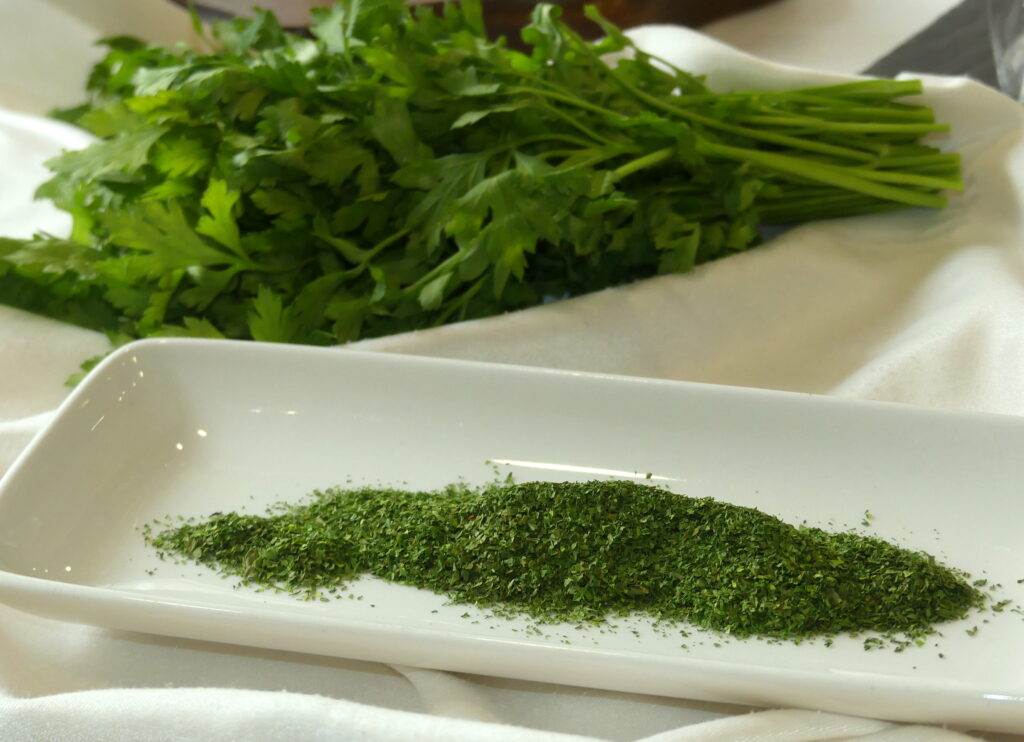
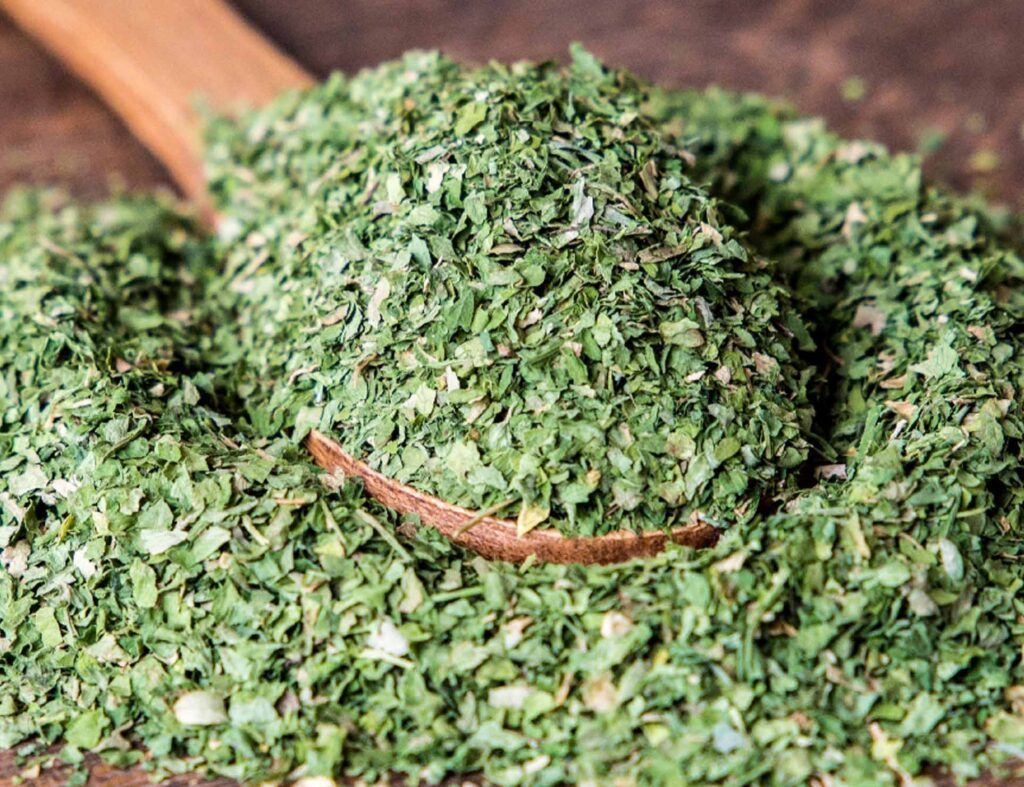
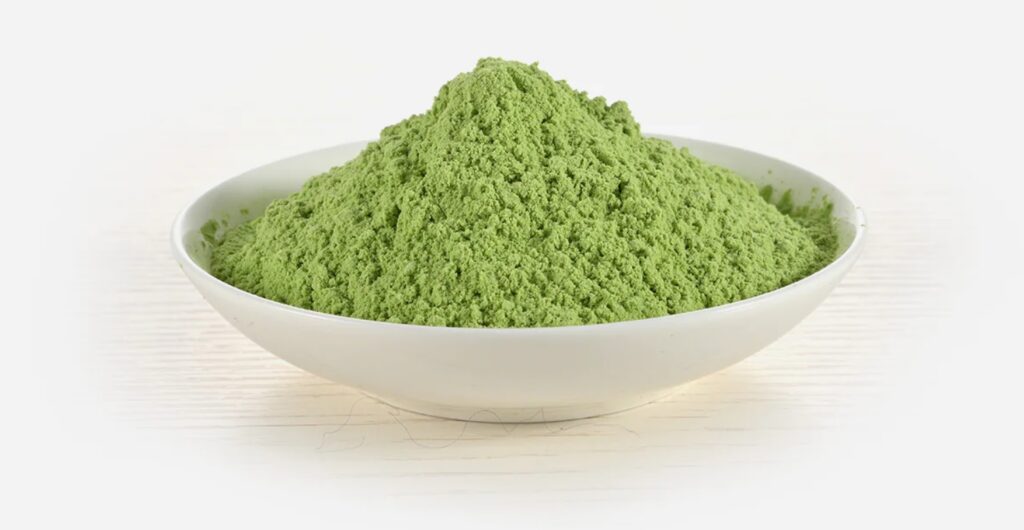
Parsley leaves:
The benefits of parsley are limited to its leaves only, as it is eaten with various salads and grilled meats to help reduce the harmful effects of cholesterol and because it is a strong appetite stimulant that fights diarrhea. Parsley is famous for containing a high percentage of vitamin A, which strengthens sexual energy and eyesight. It also contains a high percentage of vitamin A (C) Helps increase the body’s resistance to colds and bronchitis.
Macdonald in numbers:
Calcium is available in parsley to a degree that may exceed what is contained in milk for which it is famous, as we find in the milk liquid what they estimate to be one hundred and fifty (150) milligrams in every hundred cubic centimeters of it, while one hundred grams of parsley reaches 195 milligrams.
In addition to a high percentage of iron salts that reach 5 milligrams per hundred grams, and if we contemplate the composition of the liver, which is the richest circulating source of iron, we would find that it does not exceed eight milligrams only, while spinach is famous for containing no more than three of a type that is not suitable. To absorb and benefit.
What distinguishes parsley over others is the vitamin A and vitamin C it contains. The first of them (i.e. Vitamin A) we find in parsley an amount equivalent to 918 micrograms, which exceeds the basic need of an adult human recommended by the World Health Organization, which sets the minimum at 750 micrograms. The richness of parsley in vitamin A is only exceeded by watercress, hibiscus, and carrots. It is preceded by the stages of liver synthesis, which reach seven thousand micrograms (7000) in every hundred grams of it.
As for what may be surprising, it is the vitamin C that parsley contains, which is the vitamin that prevents scurvy. What is contained in one hundred grams of fresh parsley is estimated at one hundred and eighty (180) milligrams, and this is an amount greater than what is contained in the same weight of oranges or lemons, which are famous for them. This means that an amount of parsley contains three times more vitamin C than its equivalent amount of orange, while the daily human need for an adult man does not exceed thirty milligrams, according to the World Health Organization’s estimate.
Perhaps the only requirement is that it be fresh because its vitamin content decreases to worthless amounts if it wilts.
Parsley as a treatment:
It is useful in treating: menstrual problems, urinary tract infections and infections, digestive system and bladder disorders, kidney disorders and infections, menstrual disorders, digestive disorders, stomach pain, intestinal worms, and scurvy.
Macdonald and Beauty:
To remove spots, pimples, and pimples from the face, wash the face with parsley juice or its infusion twice a day.
In order to get a clear facial color, wash it morning and evening for a week. Boil about three tablespoons in half a liter of water for 15 minutes and use it lukewarm.
Please experiment
Notes:
It is important to take it daily with meals
Dried parsley loses all its important nutritional elements, so it is recommended to eat fresh parsley from today’s crop to get the full benefit.
Chopping or chopping parsley loses many of its nutritional and medicinal elements, so it is recommended to eat a fresh leaf with the main meal. When chopping or chopping it, it should not be left for a long time, but rather eaten immediately so that its beneficial oils do not evaporate.
warning:
Parsley should not be used as a treatment for pregnant women or those planning to become pregnant, as well as for children under two years of age and for people who suffer from chronic diseases of the digestive system such as gastrointestinal ulcers and colon ulcers. Dried parsley seeds or roots, as well as the stems and leaves, should not be used for pregnant women. Green parsley can be used. Fresh before it wilts.
